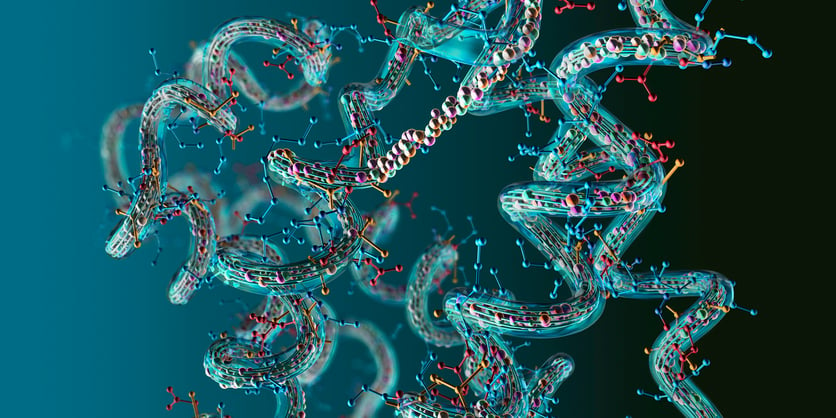预约演示
更新于:2025-05-07

BioDuro LLC
更新于:2025-05-07
概览
关联
2
项与 BioDuro LLC 相关的药物靶点 |
作用机制 URAT1抑制剂 |
在研机构 |
非在研适应症- |
最高研发阶段临床3期 |
首次获批国家/地区- |
首次获批日期- |
作用机制 FGFR2拮抗剂 [+1] |
最高研发阶段临床1期 |
首次获批国家/地区- |
首次获批日期- |
2
项与 BioDuro LLC 相关的临床试验CTR20230359
一项在携带FGFR2和/或FGFR3基因改变的晚期肿瘤受试者中研究KIN-3248的安全性、耐受性、药代动力学、药效动力学和抗肿瘤活性的I/Ib期、开放性、多中心研究
本研究A部分(剂量递增部分)的主要目的是在携带FGFR2和/或FGFR3基因改变(包括融合)的晚期肿瘤受试者中确定KIN-3248口服给药的安全性和耐受性(包括DLT),并确定KIN-3248的最大耐受剂量(MTD)和/或RP2D,用于进一步临床开发。
研究B部分(剂量扩展部分)的主要目的是在携带FGFR2和/或FGFR3基因改变的晚期肿瘤受试者中评估KIN-3248抗肿瘤活性的初步证据。
次要目的是表征KIN-3248的PK。
探索性目的包括额外表征有效性和安全性的暴露-效应关系以及潜在的KIN-3248代谢物;评估KIN-3248的靶向调节作用,并评价血液样本和/或肿瘤活检中对KIN-3248治疗产生缓解/耐药的潜在生物标志物。
开始日期2023-04-06 |
申办/合作机构 诺为泰医药科技(上海)有限公司 [+2] |
CTR20220422
一项在患有高尿酸血症的中国男性受试者中开展AR882(一种强效促尿酸排泄剂)的I期、随机、双盲、安慰剂对照、单次和多次递增剂量研究
(1)主要目的:
评价AR882单次和多次口服给药后的安全性和耐受性。
评价AR882单次和多次口服给药后AR882的血浆药代动力学。
(2)次要目的:
评价AR882单次和多次口服给药后AR882的降血清尿酸作用。
评价单次和多次口服AR882后AR882的尿液药代动力学和药效学。
开始日期2022-02-21 |
申办/合作机构  杭州泰格医药技术咨询有限公司 杭州泰格医药技术咨询有限公司 [+2] |
100 项与 BioDuro LLC 相关的临床结果
登录后查看更多信息
0 项与 BioDuro LLC 相关的专利(医药)
登录后查看更多信息
11
项与 BioDuro LLC 相关的文献(医药)2019-12-01·Molecular Cancer Therapeutics
Abstract A016: Use of luminescent xenograft and 3D In vitro tumor models in pharmacology studies of chimeric antigen receptor-T (CAR-T) cells
作者: Gan, Shanshan ; Wang, Zhuyao ; Zhang, Leixin ; Li, Ruyi ; Broudy, Thomas ; Cuff, Patrice
2019-12-01·Molecular Cancer Therapeutics
Abstract B051: Antitumor activity of dual PD-1 and LAG-3 blockade reversed by adoptive transfer of tumor-draining lymph node cells
作者: Liang, Wei ; Valdovinos, Lilibet ; Hinata, Kaede ; Sharma, Geeta ; Broudy, Thomas B ; Yapjoco, Kaitlyn
2019-12-01·Molecular Cancer Therapeutics
Abstract C117: Development of autologous tumor: TIL coculture from patient-derived samples for in vitro preclinical immuno-oncology studies
作者: Hinata, Kaede ; Cuff, Patrice ; Broudy, Thomas ; Liang, Wei
11
项与 BioDuro LLC 相关的新闻(医药)2025-02-24
India's Granules has shelled out a reported $22.3 million to snap up Swiss CDMO Senn Chemicals. The move positions Granules to break into in the booming peptides production business.
In a bid to break into the CDMO business at one of its most lucrative angles, India's Granules is snapping up Swiss contract manufacturer Senn Chemicals.The deal, once closed, will immediately propel Granules into the fast-growing market for peptide-based therapeutics thanks to Senn's know-how in both liquid-phase peptide synthesis (LPPS) and solid-phase peptide synthesis (SPPS), Granules explained in a press release. Although Granules didn’t disclose the sale price, The Economic Times reported the price tag at 20 million Swiss francs ($22.3 million). The deal is expected to close in the first half of this year.Senn already boasts a strong CDMO business and an established rolodex of clients, Granules said in its release.The company aims to make a name for itself in the peptide-based drug market for diabetes and obesity, which has experienced a meteoric rise in recent years thanks to the advent of GLP-1 drugs from Novo Nordisk and Eli Lilly. “By entering the rapidly growing peptide therapeutics segment and acquiring CDMO capabilities, we are expanding into next-generation therapeutics that align with our commitment to innovation and affordability,” Krishna Prasad Chigurupati, Granules’ chair and managing director, said in the company's release. Granules and Senn have already been working together to develop a pair of GLP-1-based active pharmaceutical ingredients (APIs), and they expect to add more peptide-based APIs to their portfolio in the future with the help of Senn’s R&D capabilities.The Granules news comes amid a boom in the industry's peptide manufacturing efforts. In mid-February, German CDMO Axplora revealed a 50-million-euro upgrade at its production facility in Mourenx, France, designed to boost overall peptide purification strength and support the development of new biologic therapies, including GLP-1 drugs to treat diabetes and obesity. A month ago, the research and CDMO group BioDuro debuted a new peptide synthesis production facility at its campus in the Zhangjiang tech center in Shanghai.And in September, South Korea’s SK pharmteco said it would shell out $260 million to build out its capacity to make small-molecules and peptides at what would be the CDMO’s fifth manufacturing facility in its home country.

2025-01-13
In a move to expand its capabilities, research and CDMO group BioDuro debuted its new peptide synthesis manufacturing facility at its campus in the Zhangjiang tech center in Shanghai.
BioDuro, a research and CDMO group, opened a new peptide synthesis manufacturing facility at its campus in the Zhangjiang tech center in Shanghai.The facility expands the company’s peptide synthesis capabilities in order to meet growing demand for products that use a variety of peptide molecules including linear peptides, cyclic peptides and various peptide-drug conjugates, it said in a Jan. 9 press release.Financial and square footage details of the project weren’t disclosed. BioDuro’s new facility features a kilogram-scale peptide laboratory with automated solid-phase peptide synthesizers, cleavage systems and freeze-drying equipment, supporting peptide synthesis scale-up to 800 millimole.“Demand for peptide based programs has increased considerably, and the opening of this new laboratory provides BioDuro's customers with a significant step forward in addressing the capabilities required to scale their candidates to compete in this fast-growing field,” Armin Spura, Ph.D., BioDuro’s chief executive, said in the release.BioDuro, which was formed in 2005 in San Diego and China originally as a CRO, merged with contract manufacturer Formex in late 2015 just months after being acquired by Bridgewest.Formex was founded in 2013 with Biotechnology Investment Group, a Bridgewest-backed firm that bought PharmaForm from the struggling Akela Pharma and spun it into a new company.

并购
2023-03-08
2023年3月8日,是第113个国际妇女节,也是我国第100个妇女节。今年,联合国妇女署将把 “数字包容:创新和技术推动性别平等” 作为国际妇女节主题。创新和技术,向来也是医药行业发展的动力和源泉。在医药行业这样一个需要极大创新力的领域里,革新和进步是永恒的生命力,而“女性视角”则给科技界带来了不可忽视的作用。时代在变,“她力量”也逐渐硬核,走到了时代前沿。更多的科技女性在人工智能、医药、医疗器械等领域,引领着科技变革的浪潮。作为E药经理人全年最重要的活动之一,我们此前特别发起了“2023最具影响力医药未来女性”系列活动,其中“2023最具影响力医药未来女性30人”榜单今日正式揭晓!经过为期两周的报名及投票,最终,我们51位入围的医药女性共获得了超62万人次的访问量以及超过40万票的支持。其中,30位来自各个领域的优秀女性进入最终的榜单。我们也向所有参与、入围“2023最具影响力医药未来女性30人”评选活动的医药女性表示感谢。另外,“2023最具影响力医药未来女性”系列活动将会持续推出系列主题直播活动,向行业呈现在医药领域前沿,最具影响力、发现力和潜力女性领导人们对于行业的见地。附:2023「最具影响力医药未来女性30人」名单(排名不分先后)- 魏君 睿健医药联合创始人兼CEO -魏君领导睿健医药成为全球首个基于化学设计的通用型细胞药物开发公司,目前尚无其他机构使用同类平台进行产品开发,因此,睿健医药位于目前细分赛道首位。睿健医药结合其独特的化合物发现平台与“命运决定因子”基因组数据库,可发现并利用新化合物分子来触发特定的细胞转分化过程,而无需对细胞进行基因组修饰,高效实现了细胞种类的快速转化此外。此外,其带领团队开发的另一个突破性平台是利用化合物抑制 MHC 发育,通过这一全新的方法获得通用型细胞治疗产品。- 臧晓羽 N1 Life联合创始人兼CEO -臧晓羽在药物递送领域有近 10 年的研发和产业转化经验,擅长运用多肽、蛋白纳米颗粒和具有生物兼容性的高分子聚合物等进行药物递送,攻克了多肽偶联技术中靶向载体和精准偶联等技术难点,能够降低新药研发时间和成本,提高研发成功率和产品国际化竞争力,解决更多未被满足的临床需求,会更普惠各个地区的病人,包括第三世界国家的贫穷病人,提供经济有效的治疗方案。- 翟一帆 亚盛医药首席医学官,顺健医药总裁兼首席执行官 -在加盟亚盛医药前,曾先后在美国国立癌症研究所/国立卫生研究院(NCI/NIH)、GSK、拜耳制药(Bayer)及Exelixis等著名机构和企业任职,从事国际原创新药研究近30年,在病理学、药理和毒理学以及临床研究方面具有丰富的科研和实战经验。她是世界首例肿瘤疫苗Ad2MART1和Ad2GP100的发明者和制造者之一,全球首个小分子靶向抗肿瘤药物索拉非尼的共同发明人之一。她先后直接领导和参与多项1类原创新药研发,其中 80 多项进入临床各个开发阶段,其中Cabozantinib、Mapatumumab 、索拉非尼成功获批上市。翟一帆在亚盛医药带领团队实现了中国首个且唯一的第三代BCR-ABL抑制剂奥雷巴替尼的成功上市。- 崔霁松 诺诚健华联合创始人、董事长兼首席执行官 -崔霁松拥有超过 30 年的新药研究与开发经验。在创立诺诚健华之前,她曾任 PPD 旗下保诺科技(BioDuro)的总经理及首席科学官,全面负责 BioDuro 的研发、运营、商业及资源管理。在加入BioDuro 之前,她曾在美国默克公司工作 14 年,担任心血管疾病领域早期药物研发部主席等职务。崔霁松在美国普渡大学 (Purdue University) 获得分子生物学博士学位,在霍华德休斯医学研究所 (Howard Hughes MedicalInstitute) 完成博士后研究。她曾担任美中医药开发协会(SAPA)第 17 任主席,SAPA 中国主席,也是 SAPA 首位女主席。- 夏瑜 康方生物创始人、董事长、总裁兼首席执行官 -夏瑜于制药业及学术研究拥有近30年的经验。创立康方生物前,夏瑜自2008年4月至2012年3月担任中美冠科生物技术有限公司的多个领导职位,执行构建中美冠科生物技术的平台、组建团队、制订及执行战略的决策职责,以及与辉瑞(辉瑞-冠科亚洲癌症研究中心)成立合营公司。自2006年7月至2008年3月,夏瑜担任PDL Biopharma, Inc.(后被艾伯维收购)的资深科学家及小组负责人。自2006年1月至2006年6月,夏瑜担任美国拜耳公司的高级工艺开发科学家。夏瑜于PDL Biopharma及拜耳监督治疗蛋白及抗体药物的CMC、工艺开发及生产。夏瑜自2000年12月至2005年12月于Axys Pharmaceuticals, Inc.(后被Celera Genomics收购)开展事业,负责药物发现项目的科研及管理职务,监督靶点验证以至IND研究等多项活动。- 郑薇 国联证券医药首席分析师 -郑薇于2010-2015年在深圳迈瑞医疗体外诊断事业部就职5年,主要方向为产品研发+战略发展。2015-2021分别任职华泰证券、天风证券,2017-2021年任天风证券医药首席分析师,2021年加入国联证券。拥有14年医药,尤其在器械领域产业投研经验。- 郑静 信念医药联合创始人、CEO -郑静在基因治疗产业领域拥有二十年多的科研、产业化经验,拥有多个成功的基因治疗产品研发和转化案例。她也是成功的连续创业者,2005年至今已有三次创业经历。2018年创立了信念医药,带领团队攻克了AAV基因治疗关键技术和工艺壁垒,解决了AAV载体生产难度大、效率低、成本高等问题;以及自主开发的亚洲首个血友病B基因治疗药物已经进入临床III期阶段,其临床研究成果在2022年5月、10月两次登上全球顶级期刊《柳叶刀-血液病学》和《新英格兰医学杂志》,并获批中国突破性治疗品种,以及美国FDA孤儿药认定。2022年12月,血友病A基因治疗药物获得美国FDA孤儿药认定。- 范靖 霍德生物创始人、CEO -范靖在国外顶级学术期刊发表学术论文十余篇,是干细胞培养及分化、神经疾病模型、细胞信号通路等方面的国际专家。于2017年回国创立了浙江霍德生物工程有限公司,目前带领团队致力于用国际领先的干细胞神经分化技术为中风、自闭症、老年痴呆、帕金森等神经疾病提供最优的体外模型、药物筛选平台,以及进行这些疾病的功能性细胞治疗产品的研发。- 胡海岚 浙江大学脑科学与脑医学学院院长、双脑中心主任 -胡海岚主持中国科学院“百人计划”(终期评估优秀)、国家杰出青年科学基金等多个项目,并作为骨干参加了科技部973重大科学问题导向项目和中国科学院战略性先导科技专项(B类)的研究工作。 致力于研究情绪与社会行为的分子与神经环路机制,近六年来在情绪的神经编码、抑郁症发生的分子机制、以及社会等级的神经基础等方向,取得了一系列在应用价值的系统性原创成果。 胡海岚团队首次揭示了导致抑郁的大脑机制,为研发新型抗抑郁药物提供了多个崭新的分子靶点。- 俞丽华 Cytiva(思拓凡)中国总经理 -俞丽华在全球新药研发技术、抗体、细胞与基因治疗、疫苗和重组蛋白等生物制品应用领域有丰富的实践经验,尤其在一次性技术等生物工艺领域、药品生命周期 CMC 解决方案、生物医药生产法规制定等方面有着丰富的全球经验和深入见解。在Cytiva(思拓凡),俞丽华积极推动技术创新与进步,见证Cytiva亚洲首个技术研发卓越中心在上海成立,深入链接全球技术和本土需求,为中国生物医药创新加速;与此同时,她立足长远,搭建行业“朋友圈”,依托Fast Trak和Cytiva学堂的生物工艺人才培训项目、Think Big和Think Early等加速源头创新转化的平台,为生物医药未来发展的两大引擎——人才和创新,提供源源不断的动力。- 陈晓 耀乘健康CEO -陈晓负责耀乘健康的主要业务运营,包括公司主要战略拓展、人才招聘、融资和对外关系等方面工作。在加入耀乘健康科技之前,陈晓就职于谷歌(Google)集团15年。她于2005年在美国加入谷歌总部任软件工程师,后任谷歌上海研发院院长、睿理健康科技(谷歌母公司旗下专注于生命科学领域的创业公司)中国区总经理。加入谷歌前,陈晓女士在美国Experien、Brocade等公司负责软件技术研发和管理工作。- 苏梅 柯菲平医药总经理、药物研究院院长 -苏梅2007年加入柯菲平,历任药物研究院院长、生产管理中心负责人、董事、总经理,承担公司研发、生产、质量、业务拓展及企业并购等核心业务创建和管理工作。其主导开发的创新药盐酸凯普拉生为我国自主知识产权的首款钾离子竞争性酸阻滞剂(P-CAB),是柯菲平医药首个中美双报并启动国际化临床开发的小分子创新药,其化合物专利已在中国、美国、欧洲、日本等多个国家和地区获得授权。2020年7月获得美国食品药品监督管理局(FDA)的IND许可,截至目前柯菲平医药已在美国完成1项I期临床研究。2021年9月向国家药监局递交了2个适应症的化1类新药NDA申请,于2023年2月15日获国家药监总局批准上市。- 易跃能 易能生物董事长兼总经理 -易跃能主要研究方向是来源于古代经典名方的中药新药的开发、天然药物的开发、基于网络药理学在中药、民族药的药效物质基础研究和质量控制体系应用;精于大品种中成药的二次开发、民族药的创新与开发。拥有10年医院临床药师经历,18年新药研发和注册申报经历。她作为第一负责人进行的四磨汤口服液技术改造,有效提升本款口服液在改善胃肠消化功能方面疗效,体现出良好的全胃肠促动力效应,使本产品年销售额达到8亿元,支撑了该产品生产单位湖南汉森制药股份有限公司整体软实力构建,为该企业成功登陆A股夯实了基础。- 李丽平 零氪科技联合创始人兼执行副总裁 -李丽平带领团队曾承接十二五、十三五、863、卫计委、科技部等50个国家级课题的数据平台的搭建,牵头建立和推动覆盖2000家医院的中国呼吸专科临床与科研一体化体系,与上海东方肝胆外科医院等25家医院联合启动大数据平台建设,用大数据、人工智能等先进的技术来帮助医生解决在临床中遇到的问题。带领团队与泰格医药、昆拓医药等CRO龙头达成战略合作,为中国本土及全球TOP级药企提供了服务,如齐鲁、罗氏、君实、阿斯利康、拜耳、诺华、强生等。参与撰写了《真实世界研究实践专家共识》,受邀参与《用于产生真实世界证据的真实世界数据指导原则(试行)》编写。- 李玉玲 健新原力制药首席执行官 -李玉玲从业20余年,曾先后在罗氏、美国人类基因科学公司(现葛兰素药业)、阿斯利康/医学免疫公司任工艺研发和GMP生产管理等重要岗位任职,在生物医药产品研发/工艺开发、GMP生产管理、CMC管理和药品注册等方面有着行业领先的宝贵经验。曾带领多个团队进行生物医药产品的研发和产业化报批,注册申请超过20多种产品,至今已有多个产品在美国FDA和欧盟EMA通过上市申请(BLA/MAA),并进入商业化生产和销售,其中最主要的是:Pegasys、Belimumab、Raxibacumab和Brodalumab,其中以BLyS为靶点的抗体药物BENLYSTA(Benalyzumab)在2011年获批治疗系统性红斑狼疮(Systemic Lupus)患者,这个产品是50多年来全球第一个治疗系统性红斑狼疮的新药, 同时也是第一个基于基因组发现的生物药,李玉玲博士直接参与了该药物从发现到BLA报批的整个过程。- 李凡 复星全球合伙人,复健资本总经理、联席CEO兼成长基金总裁 -李凡2009加盟丁香园网站,担任商务拓展总监和药企事业部负责人。组建了丁香园的第一支商业团队。为广大医药企业、医院等合作伙伴提供数字营销解决方案。在微医期间,参与了行业内第一个互联网医院的建设和运营,并参与行业规范的制定。同时,分管微医的妇幼业务线和医药业务线。主导完成妇幼平台——贝联科技的并购,并担任执行董事和总经理。自2018年加入复星集团以来,李凡专注于投资业务的开展,组建了复健创富医疗健康投资团队,擅长投资创新,带领团队完成如薄荷健康、艾康特、澳斯康、赛分科技等案例,同时助力被投企业完成战略升级、产业整合、并购、IPO等全方面的资本运作和投后赋能。2021年授命领衔复健资本团队。李凡快速组建团队,并围绕复星医药的产业资源,发挥复健资本EVC生态赋能优势,快速在行业内打开知名度。- 张蕊 医疗行业数字化转型专家 -在外企医药行业拥有近20年的工作经验包括产品管理、一线销售和人员管理;10年以上市场部工作经验,对于市场策略、新产品 上市、产品生命周期管理等有着丰富的经验。先后在美国礼来,西安杨森,阿斯利康,GSK,默沙东,勃林格殷格翰,史赛克等公司任职。熟悉呼吸,心血管,中枢神经, 糖尿病,肿瘤,女性健康,疫苗等治疗领域。- 张翚 英途康首席执行官 -毕业于东南大学电子设备结构专业。20年跨国公司经验积累,曾任职于GE、 JNJ等国际顶级医疗器械公司,2015创立英途康。- 张金华 驯鹿医疗董事长兼 CEO -张金华是跨界创业者。她是资深证券律师,具有法律和财务双重专业背景,曾任知名律师事务所合伙人,具有二十年企业上市及并购重组的经验,协助若干家生物医药企业 A 股上市成功。其本人擅长战略制定、融资融人。在创新药物研发领域,2017 年初创办驯鹿生物,专注于细胞药物研发,快速组建了一支国际化队伍。目前驯鹿在国内细胞治疗药物研发领域成为领军企业,即将成为国内自研细胞药第一个获批的、自主知识产权的一类创新药物。- 张玉冲 广东众生药业副董事长、高级副总裁 -张玉冲带领公司打造了涵盖中药大品种的上市后再评价及二次开发、仿制药及仿制药一致性评价、改良型新药、创新药的多层次研发管线。截至目前,公司已有7个创新药项目处于临床试验阶段。在经营过程中,她带领公司积极参加社会公益活动,积极投身社会公益慈善事业,连续多年举办关爱留守儿童的“为爱发声”公益活动;与地方医院联合开展“健康你我,携手前行”慢病知识讲座、免费眼底糖网筛查项目、心脑眼关爱工程等义诊、社区健康等大型公益活动。- 张可昕 嘉晨西海董事,高级副总裁 -张可昕分管嘉晨西海投资者关系、商务拓展、知识产权和人力资源部门。她拥有近10年生物医药投资孵化和管理经验。主导嘉晨西海A+和A++轮近亿美金融资,推动嘉晨西海与国内外多家上市公司开展项目合作。从事医疗投资期间,主导和参与的项目包括亚盛医药、嘉晨西海、逻晟生物、渤因生物等。- 宋相容 威斯津联合创始人、常务副总经理 -宋相容是中国籍现代医学与前沿生物领域专家,现任四川大学研究员,成都威斯津生物科技有限公司常务副总经理,哈佛大学纳米医学中心及医学免疫中心访问教授。通过研发具有自主知识产权的mRNA靶向递送载体及辅料,开展mRNA创新药物的研发。经过近9年深入系统的研究,取得多项核心技术的突破与创新。在新冠疫情期间,主持研发的新冠变异株mRNA疫苗已向国家药监局申请开展临床试验(IND),负责制剂研发的1类新药已获IND,为疫情防控事业提供了技术支持,同时为中国培养了大批现代医学与前沿生物领域,特别是基因、核酸药物方向技术骨干超千人。在新药转化研发方面有较为丰富的实战经验,作为联合创始人成立的专注mRNA药物研发/生产/销售于一体的产业化公司威斯津生物,目前已估值超8.4亿元。- 吴凤岚 华毅乐健联合创始人兼总裁 -吴凤岚在药物早期研发、临床开发、注册申报以及资本运作方面具有丰富的经验,是稀缺的专业和金融复合型人才。早年接受药学专业科学训练,吴凤岚博士曾担任医疗企业医药科学家。在葛兰素史克、再鼎医药曾主导多个项目完成IND申报。后期投入到金融工作中,以扎实科研背景为基础,结合敏锐市场判断力与理解,帮助多家医药企业成功获得融资,助力他们一路成长。2019年加入华毅乐健,担任联合创始人&总裁,高效推进国内首个血友病A基因治疗产品IND获批,颠覆传统治疗手段使得所有的A型血友病患者获益,达到一次注射长期甚至终身稳定维持正常的生活品质。- 朱芳芳 血霁生物创始人 -朱芳芳是北京大学细胞生物学博士和斯坦福大学博士后,上海交通大学副教授,曾师从“干细胞之父”、美国三院院士、斯坦福大学干细胞所所长Irving Weissman,以及著名干细胞学者北京大学邓宏魁教授,在Cell Stem Cell、STTT、Nature Communications、PNAS等学术期刊上发表十多篇论文,引用次数超过2000次。朱芳芳拥有15年干细胞研究经验。在北京大学,朱芳芳首次建立了恒河猴iPS细胞,这是除日本科学家建立的人和鼠iPS细胞外被成功重编程的第三个物种,发表了高影响力的文章并引起了国际科技媒体的广泛报道;在斯坦福大学,受训于全球最顶尖的血液研究实验室,建立了领先的血小板发育与分化研究的技术体系。归国后于2021年创立了血霁生物,这是全球第三家、中国第一家专注体外再生血小板的公司。- 刘焰 泛生子首席商务官 -刘焰在制药领域拥有超过25年跨部门管理经验,特别是在特药销售、市场和策略,以及全渠道营销领域积累了丰富的管理经验。在加入泛生子之前,任职百济神州生物技术有限公司副总裁、大中华区市场营销负责人。作为中国商业化团队的核心成员之一,为百济神州中国商业化迅速发展做出了卓越贡献。任职期间,她领导了多个产品的成功上市,凭借其卓越领导力不断激发团队潜能,打造出业界一流的肿瘤市场营销团队。- 刘利平 君圣泰医药创始人&CEO -刘利平全面负责君圣泰生物的资金募集、团队招募、研发方向的战略规划和节奏把控,并亲率团队落实到位,带领公司快速健康发展,在激烈的竞争格局中脱颖而出。创办至今,通过多轮股权融资吸引投资近15亿人民币,并获得各级政府资助近1亿人民币;同时,组建实力超群、背景多元的国际化团队近百人,为研发原创新药、造福全球患者提供坚实且可持续的资金支持和人才基础。以现代药物化学耦合传统天然药物设计新型多功能分子(例如,核心品种HTD1801的设计基于中国传统医学使用千年的天然产物“黄连”和“禽类动物胆汁”的主要成分“小檗碱”和“熊去氧胆酸” ,通过离子键成盐,构建1.1类化学新药。)- 史赫娜 贝达药业副总裁兼肿瘤事业部总经理 -史赫娜女士具有十五年以上药品销售管理经验,沟通协调和资源整合能力突出,团队管理和抗肿瘤药物品牌推广运作能力强,具有领导营销团队在创新药市场化阶段实现快速发展和赢得市场份额的领导力,对国际和国内抗肿瘤药物的发展和趋势有很好的理解和判断能力,尤其对中国创新药发展有充分的认知和独到见解。- 史艺宾 大睿生物创始人兼CEO -史艺宾同时兼任礼来亚洲基金风险合伙人。曾主导参与投资、孵化和管理的公司包括燃石医学、亚辉龙、益方生物、康诺亚、诺辉健康、熙华检测、锐格医药、新格元、品峰医疗、广州麓鹏、Repare Therapeutics、Revolution Medicine、KSQ Therapeutics等。加入礼来亚洲基金之前,史艺宾女士是罗氏制药亚太肿瘤领域新产品战略负责人,管理肿瘤领域新产品在中国和亚太地区的战略规划。目前大睿生物已经成功完成A轮融资,并和国际制药巨头赛诺菲达成重磅战略合作,成为中国第一个与全球制药公司跨越肝靶向和肝外递送平台与创新产品管线的里程碑合作。- 王弈 新合生物联合创始人、CEO -王弈领导的新合团队在mRNA肿瘤新抗原疫苗治疗肿瘤方向积极探索,同时在肿瘤微环境免疫调节剂、病毒疫苗等方向均有布局。其中自主研发的mRNA肿瘤新抗原疫苗已在北京协和医院、北京大学肿瘤医院、解放军总医院等多家三甲医院开展临床探索,并取得良好的安全性和有效性数据。2022年底,团队规模已达200+人,包括数十位哈佛、剑桥、康奈尔、北大、清华、中科院等名校博士/博士后,专业领域覆盖基因检测、AI算法、生物信息、肿瘤免疫治疗及疫苗开发等多个方向。目前新合生物已经完成了2.5亿元A轮融资及5亿元A+轮融资,企业估值超过20亿元。- 丁雅青 莱盟健康LAMH集团副总裁 -丁雅青女士具备极强的商业战略和创新能力。在全球前五跨国制药企业及本土明星Biotech企业积累了丰富的商业化和管理经验。具备医药、生物技术及基因行业全链条经验,和投融资经验,对行业有着深刻认知和洞察。
细胞疗法
100 项与 BioDuro LLC 相关的药物交易
登录后查看更多信息
100 项与 BioDuro LLC 相关的转化医学
登录后查看更多信息
组织架构
使用我们的机构树数据加速您的研究。
登录
或

管线布局
2025年10月02日管线快照
管线布局中药物为当前组织机构及其子机构作为药物机构进行统计,早期临床1期并入临床1期,临床1/2期并入临床2期,临床2/3期并入临床3期
其他
2
登录后查看更多信息
当前项目
| 药物(靶点) | 适应症 | 全球最高研发状态 |
|---|---|---|
Resigratinib ( FGFR2 x FGFR3 ) | FGFR3突变肿瘤 更多 | 终止 |
Pozdeutinurad ( URAT1 ) | 高尿酸血症 更多 | 无进展 |
登录后查看更多信息
药物交易
使用我们的药物交易数据加速您的研究。
登录
或

转化医学
使用我们的转化医学数据加速您的研究。
登录
或

营收
使用 Synapse 探索超过 36 万个组织的财务状况。
登录
或

科研基金(NIH)
访问超过 200 万项资助和基金信息,以提升您的研究之旅。
登录
或

投资
深入了解从初创企业到成熟企业的最新公司投资动态。
登录
或

融资
发掘融资趋势以验证和推进您的投资机会。
登录
或

Eureka LS:
全新生物医药AI Agent 覆盖科研全链路,让突破性发现快人一步
立即开始免费试用!
智慧芽新药情报库是智慧芽专为生命科学人士构建的基于AI的创新药情报平台,助您全方位提升您的研发与决策效率。
立即开始数据试用!
智慧芽新药库数据也通过智慧芽数据服务平台,以API或者数据包形式对外开放,助您更加充分利用智慧芽新药情报信息。
生物序列数据库
生物药研发创新
免费使用
化学结构数据库
小分子化药研发创新
免费使用

